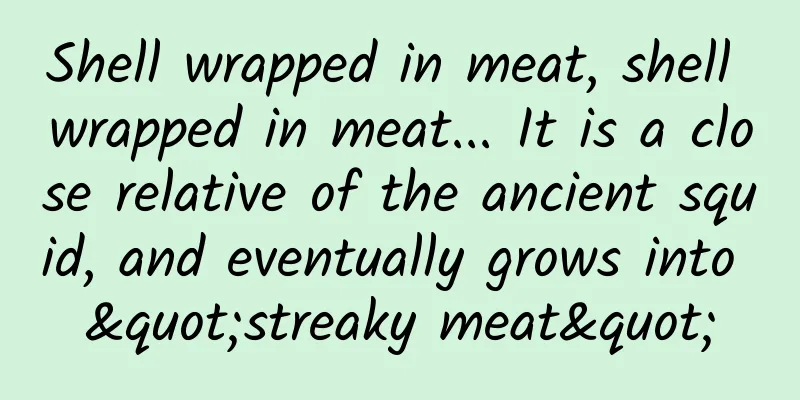Three colors in one day! This flower can actually "change its face", don't miss it in autumn~

|
All the flowers have fallen, but the fragrance remains, the red petals seem to resist the severe frost. - Wang Anshi, "Flowers Resisting Frost" The natural color of ice and jade, the desolate and lonely west wind guest. ——Fan Chengda's "Bodhisattva Man" Who doesn’t love the yellow chrysanthemums during the Kaiyuan Qianqiu Festival? We always summarize autumn as a golden color, but we don’t know that in this season, there are also gorgeous scenes of red flowers and thick morning dew. When all the flowers are withering, it remains as clear as jade and fragrant, determined to resist the merciless frost. Fan Chengda used "jade" to describe its moist and radiant appearance, and Wang Anshi used "frost-resistant flower" to praise its blooming despite the severe cold, but we always ignore its existence. Hibiscus provides a touch of bright color to this bleak autumn, confident and calm. Why not golden chrysanthemum and late hibiscus, they are beautifully dressed up. Chrysanthemum. Image source: China Plant Image Library Mmm~ This flower smells really good. Image source: boredpanda 01 The fragrance is faint from afar, but strong from near, and the purple spikelets are covered with snow Hibiscus mutabilis is also known as "frost-resistant flower, hibiscus flower, magnolia, ground hibiscus, three-changing flower, nine-headed flower, iron hoop powder, turning flower, cooling paste", etc. It is a deciduous shrub or small tree, and the plant height can reach 2-5m. The leaves are ovate-cordate, with triangular lobes, gradually pointed at the tip and obtusely serrated. The flowers are solitary in the leaf axils at the branch ends; the pedicels are 5-8 cm long and have nodes near the top; the calyx is bell-shaped, and the corolla is white or light pink at first, and then dark red. There is a distinct color pattern in the flower, with the inner base of the petals forming a dark heart shape, which is a common feature of the hibiscus genus. The flowers are densely packed, with single and double petals. The flowering period is relatively long, with August to October being the peak flowering period each year, which is also the best time for viewing. Single-petal hibiscus. Image source: China Plant Image Library Double-petaled Hibiscus. Image source: China Plant Image Library Hibiscus mutabilis has a nearly 3,000-year history of cultivation in my country. It is native to Hunan and other places in my country and is now widely distributed in various provinces in my country. It is also cultivated in Japan and Southeast Asian countries. For Chengdu, hibiscus is not only a symbol of a flower or a pattern. In the Warring States Period, a divine tortoise cleverly drew a "hibiscus pattern"; During the Five Dynasties and Ten Kingdoms period, Meng Chang, the last ruler of Shu, planted hibiscus on the city walls for the "Lady of Flower". When the flowers bloomed, the forty-mile scenery was like brocade, with red phoenixes casting shadows and colorful clouds gathering. It was so beautiful that Chengdu was named "Rongcheng" and the silk curtains made of flowers were named "hibiscus curtains". Hibiscus is now the city flower of Chengdu. 02 Don't be afraid of autumn without intoxicating things, the water lotus has faded and the wood lotus has bloomed The flowering period of Hibiscus mutabilis is generally from August to October. In the golden autumn season, the flowers are dazzling like colorful clouds, which is extremely beautiful. As a traditional famous flower in my country, many literati and poets of all dynasties have gathered here. "Hibiscus" has two meanings: the one that grows in water is water hibiscus; the one that grows on land is Hibiscus mutabilis. Single-petal hibiscus, image source: China Plant Image Library Lotus, Image source: China Plant Image Library Qu Yuan wrote in Li Sao, "I made clothes from lotus leaves and skirts from lotus flowers." The "lotus leaves" and "lotus flowers" refer to lotus flowers. In the Nine Songs, there is a line that goes "picking lychees in the water, plucking hibiscus from the end of the tree." The "hibiscus" here refers to the wood hibiscus. The book Changwuzhi says: "Hibiscus is best planted by the bank of a pond, preferably by the water." The Hibiscus described here has a graceful reflection when it blooms, and the shadow moves in the wind, swaying gracefully, similar to the color of the lotus, so it is called "Hibiscus reflecting on the water." 03 Who can stand by the stream, leaning against the wind and holding on The blooming of hibiscus in the frost symbolizes steadfastness and perseverance. Literati and poets have endowed it with an ideal personality, which makes hibiscus have a "flower pattern" corresponding to its "personality", that is, the frost-proof posture of "pride" and "non-contention". Among them, Dream of Red Mansions is the most outstanding. Cao Xueqin, because Daiyu's character and personality of "being aloof and self-righteous, looking down on the world" are consistent with the flower quality and pattern of hibiscus "being alone in the cold autumn and resisting the frost", made hibiscus the embodiment of Lin Daiyu who has the talent of chanting catkins, "does not follow the trend to pursue glory", "seems to be sad in the morning and sad in the evening". Image source: Old photos of the 1987 TV series Lin Daiyu In the 38th chapter of A Dream of Red Mansions, Daiyu asks the chrysanthemum, "Who shall I hide with, my proud and lonely self? Why do all flowers bloom so late?" She is actually asking herself, she does not want to go with the flow, but has no confidant to accompany her? "Three hundred and sixty days a year, the wind, frost and sword are pressing hard", "I came pure and will leave pure", facing the pressure and coercion of the world, she refuses to bow to the world and leaves with a clean body. Second, it was born near water: "When quiet, it is like a beautiful flower reflected in the water." In her previous life, Daiyu was a red pearl fairy grass on the river bank. The attendant Shenying irrigated her with sweet dew every day, which allowed her to live longer. To repay his kindness, she gave him her tears for her whole life. In the third chapter, Baoyu and Daiyu first met, "When she was quiet, she was like a beautiful flower reflecting in the water; when she moved, she was like a weak willow swaying in the wind." The image of Daiyu described here as "a beautiful flower reflecting in the water" is very consistent with the image of hibiscus "looking at the clear water when she is idle." Therefore, Daiyu in A Dream of Red Mansions, who "receives the essence of heaven and earth and is nourished by nectar", is a representative of the author's transcendental, pure and beautiful, and the hibiscus is also "elegant and elegant, standing alone among the flowers, and the best of autumn colors". Therefore, the core spirit of Chinese flower culture is to personify flowers, give flowers personality, and give people flower character, so that "flowers and people are one". The pictures are: Lin Daiyu, Hibiscus mutabilis. Picture source: "Flower Language of the Twelve Beauties of Jinling" 04 The makeup at dawn is like jade, and at dusk it is like clouds. The shades of autumn dye this flower Chameleons can change their body color according to the environment, but did you know that flowers also have this unique skill? "In one day, the flower changes color three times." We also call the hibiscus "the three-drunk hibiscus." Its flower color can change according to the sunlight. When it first blooms in the early morning, the hibiscus appears white or pink; in the hot noon, it gradually turns into a delicate scarlet. It is particularly precious in the bleak autumn. Hibiscus of different colors. Image source: China Plant Image Library Studies have found that changes in the color of hibiscus flowers may be caused by changes in the chemical composition of the petals. Flavonol glycosides and anthocyanins are not present in the petals that open in the morning, but the total content of anthocyanins in the evening is found to be three times that of noon. However, the content of flavonols in flowers at noon and evening is the same as that in the morning, so it is believed that anthocyanins are synthesized independently. The study measured the content of total flavonoids, anthocyanins and carotenoids in hibiscus petals and found that the difference in the types and contents of different pigments is the direct cause of the color change. The main pigments in the white flowers in the morning and the red flowers in the evening are quercetin 3-saponin and anthocyanin 3-morosin. The color change of flowers from white to red is due to the accumulation of anthocyanidin-3-succinoside. In the initial and rapid stage of pigment accumulation, the activity of phenylalanine ammonia lyase (PAL) in intact petals increases rapidly to 7 times the initial level and then decreases as the flower ages. PAL inhibitor (L-α-aminooxy-β-phenylpropionic acid) was found in isolated petals to inhibit the formation of pigments. In addition to anthocyanidin 3-xylosyl glucoside and anthocyanidin 3-glucoside, the red flowers of Hibiscus also contain flavonoid components such as quercetin 3-morusin, isoquercetin, hyperoside, guaiacoside and kaempferol glycoside. Flavonoids, as precursors of anthocyanins, showed a significant positive correlation with the content of anthocyanins, while the content of total flavonoids and total anthocyanins was usually negatively correlated with total carotenoids. In addition to its high ornamental value, Hibiscus also has important value in medicinal, edible and economic aspects. Its stem bark contains 39% cellulose. The stem bark fibers are flexible and water-resistant, white, flexible, and resistant to moisture. They can be used for textiles, ropes, cables, hemp substitutes and raw materials, and can also be used for papermaking, etc., and have important economic value. Throughout the ages, there have been countless evaluations of Hibiscus, both praise and criticism, but beautiful things do not need too much evaluation. In this golden autumn season, we appreciate the beauty of flowers and savor the beautiful scenery. In the face of natural beauty, you and I are both awe-inspiring travelers. References: [1]Shanker R, Vankar PS. Dyeing cotton, wool and silk with Hibiscus mutabilis (Gulzuba)[J]. Dyes & Pigments, 2007, 74(2): 464-469. [2] Subramanian SS, Nadx AGR. A note on the color change of the flowers of Hibiscus mutabilis[J]. Current science, 1970, 39 (14): 323-324 [3] Lu Xiaohong, “Reduce swelling and relieve pain”, Hibiscus mume. Guangxi Forestry, 2016 (10): 23-24 [4] Zhang Lanlan. (2010). “The Hibiscus that Relies on the Wind and Holds Its Own” - Lin Daiyu. Writers (04), 119-120. [5] Zhang Lanlan. (2010). On the “unity of flower and person” between Hibiscus mutabilis and Lin Daiyu. Shanhua (04), 143-145. [6] Pan Shengli. (2006). Recipe for 10 kinds of flowers: Hibiscus. Gardening (10), 52-53. [7] Zhou Kaiyuan, Pu Huaqiong & Wang Wenlan. (2004). Color-changing flowers - Hibiscus. Chinese Flower Bonsai (09), 16-17. [8] Sun Yiming, Shi Xiaoqing, Liu Xiaoli & Quan Qiumei. (2021). Research progress on Hibiscus mutabilis. Journal of Mianyang Normal University (11), 78-82. doi:10.16276/j.cnki.cn51-1670/g.2021.11.015. [9]Lowry JB. Floral anthocyanins of some male Hibiscus species[J]. Phytochemistry, 1976, 15(9): 1395-1396. [10] Xia Xiaodan, Huang Ting, Xue Man, et al. Research progress on chemical components and pharmacological effects of Hibiscus mutabilis[J]. Chinese Traditional Patent Medicine, 2017, 39(11): 2356-2360 Produced by | Science Popularization China Author: Li Xiaopei (Chinese Academy of Forestry) Review | Liu Bing (Institute of Botany, Chinese Academy of Sciences) Producer|China Science Expo Submitted by: Computer Information Network Center, Chinese Academy of Sciences |
<<: Can "eating dirt" cure enteritis? What kind of weird linkage is this?
>>: Isn’t the global warming happening? Why is the cold wave still coming so strongly?
Recommend
Facebook low-cost traffic generation skills!
Marketers often look for ways to get more Faceboo...
Surprise! The "supermoon" will be here for the Mid-Autumn Festival. This year, you can "feast your eyes"
The bright moon rises over the sea, and the world...
Cool! Stunning! Chinese style! Sneak peek——
On September 22, the posters for the Beijing 2022...
How much does it cost to customize the Tonghua rain gear mini program? What is the price quote for Tonghua rain gear mini program customization?
There is no doubt that the topic of mini programs...
Interpretation of how to play Tmall Double 11 building activity!
There is no change in the underlying model betwee...
Are you getting fatter the more you eat whole wheat bread? What you are eating may be "fake". Here's a trick to help you avoid the pitfall!
This year, the trend of healthy eating is becomin...
Signs of heart disease written on the face, people with these 8 facial features should pay attention!
If one day, your family and friends ask: Why does...
The annual wearing cost is tens of thousands of yuan. Are OK glasses a “magic weapon” to prevent myopia?
The reputation of the "magic" anti-myop...
Do you rely on "shivering" to keep warm in winter? 5 heater reviews to keep you warm in winter~
Winter in the north: witnessing the first snow vs...
Loopy, the top-ranked app on the Internet, is a "worker" that can be killed by a tree.
Recently, the most popular emoticon in the world ...
Promoting drug research and development, assisting artificial intelligence...what possibilities can the magical nanotechnology bring to the world?
In today's world, people are no longer unfami...
An Xiaoyao's "Male God Transformation Plan" transforms you into a charming boy and easily chases the girl you love
We have to say NO to our above selves! Although w...
91 Ten Articles: The world's first autonomous driving stock will be listed, and the United States will legislate to solve the chip shortage problem
1. In March this year, Changan Automobile achieve...
The gap between Chinese and American TV series from the second season of Fargo
Compared with the popular domestic TV series, Ame...









